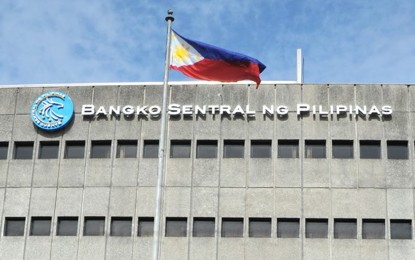
MANILA -- The Monetary Board (MB) approved public sector loans in 2018 amounting to USD7.355 billion, higher by USD3.869 billion (111 percent) from the 2017 level of USD3.486 billion, as the government ramped up spending on infrastructure development.
These public sector loans consisted of: (a) USD3.6 billion bonds; (b) 12 project loans amounting to USD2.9 billion; and (c) three program loans amounting to USD900 million.
These public sector borrowings will fund projects on transport connectivity (roads, railways, port, and airport infrastructure), irrigation and agriculture development, flood management, and the reconstruction and development of Marawi City.
Out of the USD7.355 billion total approved public sector loans, about 18 percent of loans or slightly over USD1.359 billion will fund five infrastructure flagship projects (IFPs) under the “Build, Build, Build” program, which seeks to accelerate infrastructure spending and generate robust economic growth and employment.
These projects include: the Metro Manila Subway Projects, Phase I; Chico River Pump Irrigation Project; New Cebu International Container Port Project; New Bohol Airport Construction and Sustainable Environment Protection Project, Phase II and Cavite Industrial Area Flood Risk Management Project.
While public sector loans increased year-on-year, the country’s external debt position remains at prudent levels.
At end-March 2019, the Philippines’ outstanding external debt stood at USD80.4 billion, up by USD1.5 billion (or 1.9 percent) from the end-December 2018 level of USD79.0 billion.
Despite the rise in external debt, the country’s debt service ratio (DSR) has consistently remained at single digit levels. The DSR stood at 5.1 percent as of end-March 2019, well below the international benchmark of 20 to 25 percent.
The DSR relates principal and interest payments (debt service burden) to exports of goods and receipts from services and primary income. It is a measure of adequacy of the country’s foreign exchange earnings to meet maturing debt obligations.
Meanwhile, the country’s external debt ratio (a solvency indicator), or total outstanding debt expressed as a percentage of Gross National Income, slightly increased to 20.0 percent (end-March 2019) from 19.9 percent a quarter ago. The ratio indicates the country’s sustained strong position to service foreign borrowings in the medium to long-term.
Under Section 20, Article VII of the 1987 Constitution, prior approval of the Bangko Sentral ng Pilipinas (BSP), through its MB, is required for all foreign loans to be contracted or guaranteed by the Republic of the Philippines.
Similarly, Letter of Instructions No. 158 dated 21 January 1974 also requires all foreign borrowing proposals by the national government, government agencies and government financial institutions to be submitted for approval-in-principle by the MB before commencement of actual negotiations.
The BSP’s role in external debt management is to keep external debt service requirements at manageable levels to ensure external debt sustainability. (PR)
